Istanbul’s Süleymaniye Mosque, standing on one of the city’s seven hills, is a remarkable piece of architecture that has graced the skyline for more than 460 years. This iconic mosque, highly frequented by both tourists and locals, carries a deep historical significance.
Beyond being a mosque, the Süleymaniye is part of a larger social complex known as Süleymaniye Külliyesi, incorporating different social services from the Ottoman era. Every year, millions visit this grand structure, intrigued by its history and the stories held within its ancient walls.
10 Things to Know Before Visiting
Here are 15 things to know before visiting Suleymaniye Mosque in Istanbul:
1 – Discovering the Mastermind: Architect Sinan’s Legacy
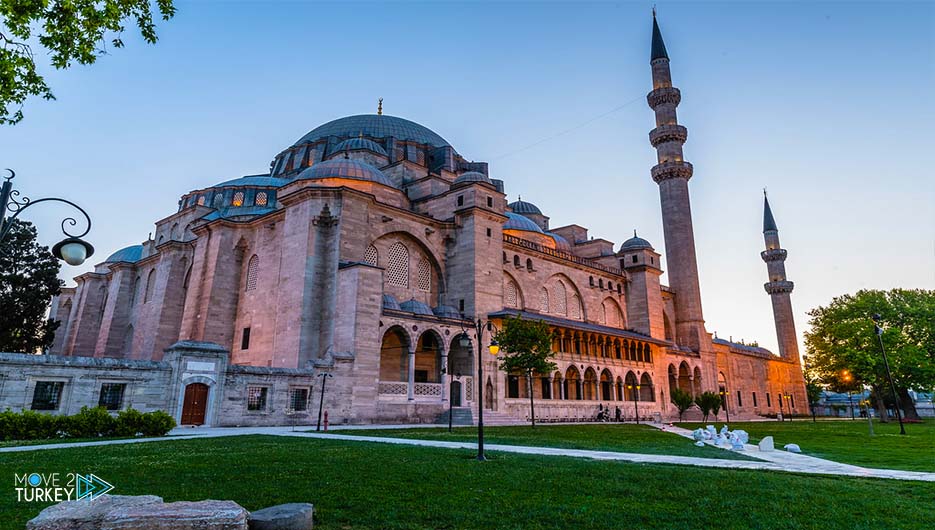
Mimar Sinan, born in 1490 in Anatolia, was a skilled architect and engineer. He made important contributions to the Ottoman Empire’s architecture. Initially working as a military engineer, his talent caught the eye of Sultan Suleyman the Magnificent.
Sinan designed and built many impressive structures, such as mosques and bridges, throughout the empire. His most renowned work is the Süleymaniye Mosque in Istanbul, finished in 1557. Despite its fame, Sinan modestly called it his “journeyman” project.
Sinan’s journey culminated in his self-proclaimed masterpiece, the Selimiye Mosque in Edirne. This illustrates his humility, considering the magnificence of the Süleymaniye Mosque. Beyond their spiritual significance, Sinan’s architectural creations served broader social purposes during the Ottoman era, encapsulating over 600 years of history.
2 – The Monument of Majesty
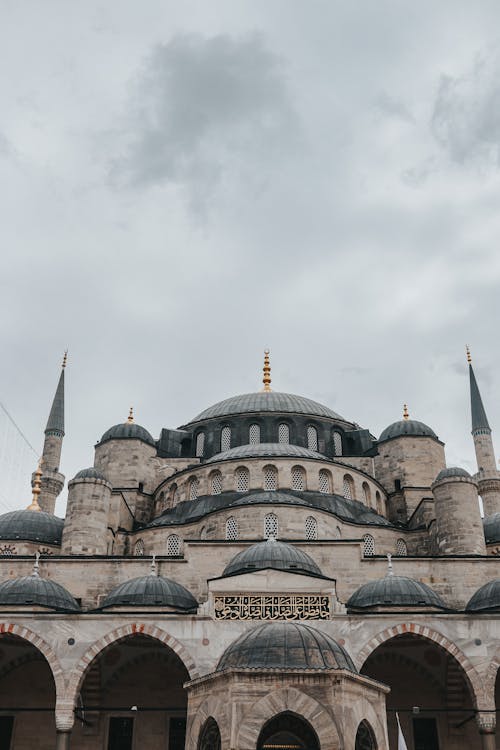
After conquering Istanbul, it became the capital and hub of the Ottoman Empire’s political and economic activities. While Ottoman architecture typically embodies humility and modesty, there was a demand for an impressive complex and mosque to serve as the focal point of the Empire’s flourishing center.
Suleyman the Magnificent (also known as Suleiman I) desired to construct a mosque. The renowned Chief Architect, Sinan, was chosen for the significant task of building his most extraordinary mosque.
As mentioned earlier, construction of the Süleymaniye Külliyesi began in 1550 with a groundbreaking ceremony attended by the Sultan. According to historical records, Architect Sinan and 3500 laborers diligently worked to ensure the timely completion of the mosque.
3 – The Gold Standard: A Construction Costing 3200 Kilograms of Gold
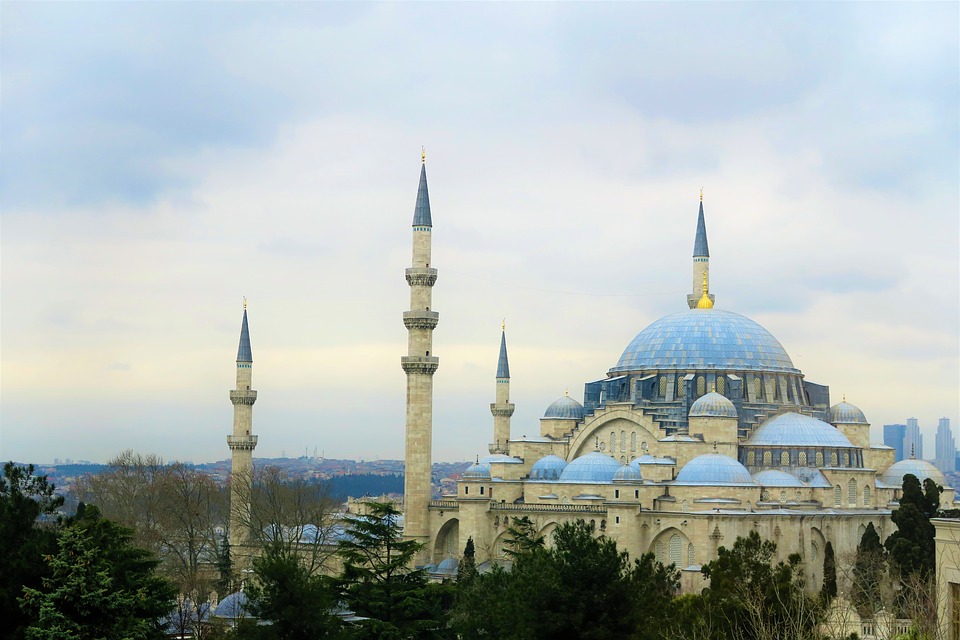
So, here’s the question everyone wants to ask: how much does it cost? The answer is astounding: 896,000 gold coins and 82,000 silver coins, totaling 3,200 kilograms of gold.
Construction materials were sourced from different regions of the Empire. For example, white marble came from Marmara Island, green marble from Arabia, iron from Bulgaria, and so on. Sinan and the Sultan aimed to showcase the vastness of the Ottoman land and ensure the use of high-quality materials.
4 – The Seven-Year Wonder: Construction Timeline

On October 15, 1557, the opening ceremony occurred. In his memoirs, Architect Sinan mentioned that he had requested the Sultan to inaugurate the mosque. However, the Sultan had replied, “It’s preferable for you to inaugurate this building that you have transformed into a house of God.” Sinan then declared, “In the name of Allah, the opener of doors,” and officially established it.
The mosque was not merely a mosque or külliye. The architect and Sultan aspired to create a city, an impressive and grand complex that would showcase the greatness of the Empire. Undoubtedly, they achieved their goal!
For nearly 470 years, it has silently watched over and embraced the Stambouliotes, İstanbul enthusiasts, and worshippers daily.
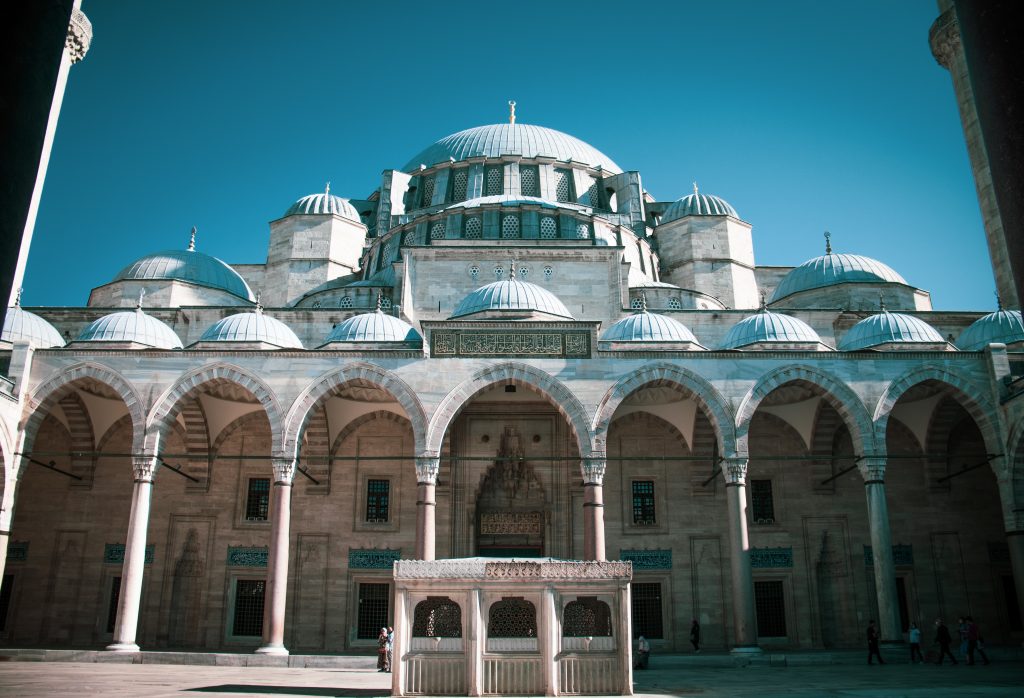
When we are talking about İstanbul, not only the history itself but the architectural culture also reveals the historical details. Especially this grand mosque! It brings so many details about Ottoman culture.
If you believe that people had their own personal pieces of knowledge at every age, you will be fascinated just like me when you read about the architectural design of the külliye and mosque.
Not only the enormous appearance of the Süleymaniye mosque that makes it literally glorious but also the architectural knowledge inside. Today it stands still, welcomes visitors, and exhibits its history.
5 – Minaret Symbolism: Four Structures, Four Sultans
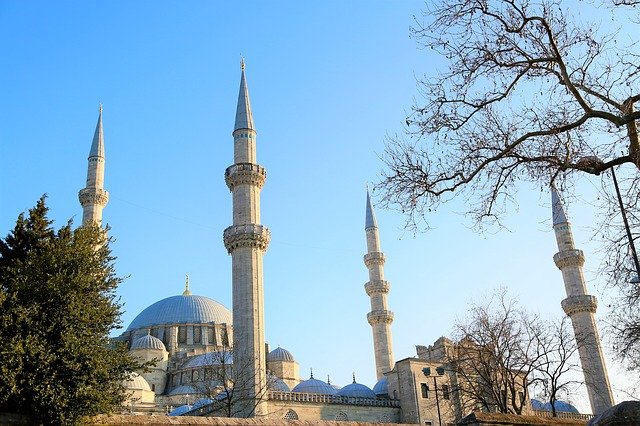
When you observe the mosque, you will likely notice four minarets, a large dome, and several smaller domes. These four minarets signify Suleyman the Magnificent’s position as the fourth Sultan following the conquest of Istanbul. Additionally, the ten minaret balconies represent his status as the 10th sultan of the Ottoman Empire.
6 – Beyond Brick and Mortar: The Jewellery Minaret’s Hidden Treasures
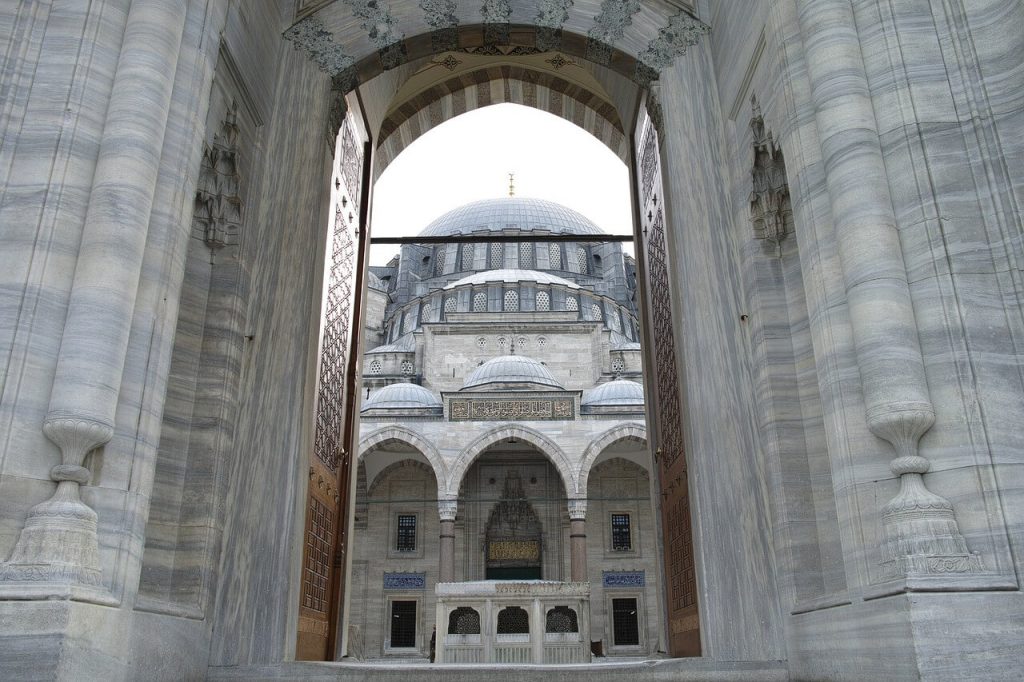
Rumors suggest construction briefly halted when the Persian Shah discovered this. To complete the külliye, the Shah graciously sent some jewelry. Sultan grew furious, leading Architect Sinan to bury the jewelry in the soil mixture of a minaret. This minaret is now known as Cevahir Minaresi, meaning “Minaret of Jewelry.”
The entrance of the külliye is provided by 11 different gates. The rectangular courtyard, surrounded by lower but domed arcades, orients visitors to the entrance of the mosque. Honestly, the moment you step into the courtyard, you will lose your sense of time and desire to get inside the mosque.
7 – Engineering Feat: The Four Pillar Support System
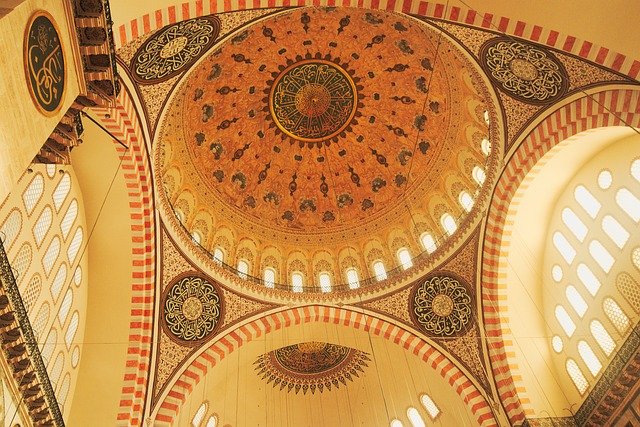
Let’s explore the prayer hall virtually. The center features a main dome with a diameter of 27.4 meters and a height of 50 meters. The dome was constructed using specially produced bricks. It is supported by four enormous pillars that symbolize the four caliphates: Ebubekir, Omar, Osman, and Ali. Additionally, the stones used in the construction were bound together with iron and supported by lead.
The pedestal is surrounded by 32 windows that allow natural light to enter. In total, there are 138 windows. The mosque was also illuminated by 275 oil lamps, which could result in soot accumulation. To address this, Architect Sinan created a system with hollows that allow for the circulation of clean air inward, while directing soot out.
8 – The Mosque City: Süleymaniye Külliyesi
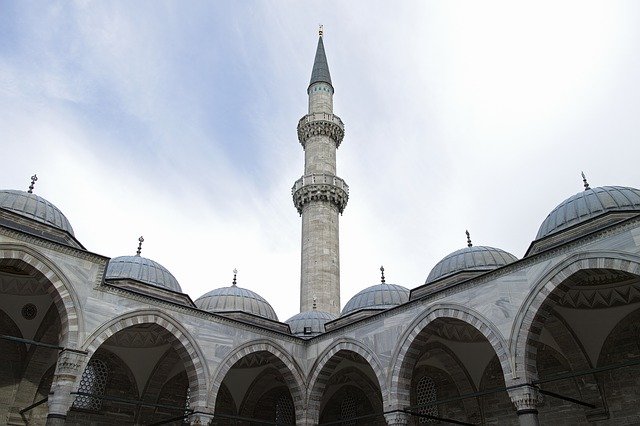
Let’s go back to the courtyard. Madrasa is an Islamic-Ottoman educational institution. Let me repeat once again, Süleymaniye Külliyesi was not designed only as a gathering for religious activities but also as a center of education and commerce.
There are seven madrasas in the Süleymaniye Külliyesi. They take place under the peripheral arcades of the Mosque, under the small domes. Today, they are used as the Süleymaniye Library.
The mausoleums are located behind the qibla in the prayer hall, which houses the resting places of Sultan Suleiman and Hürrem Sultan, i.e., his wife.
Other buildings taking place in the complex are a hospital (şifahane), a soup kitchen (darüzziyafe), an inn, a bathhouse, the resting place of Architect Sinan, and several shops. I told you, they were not simply building a mosque or külliye, a living area for the center of the Empire.
9 – Admiring the Art: Stained Glasses and Tiles
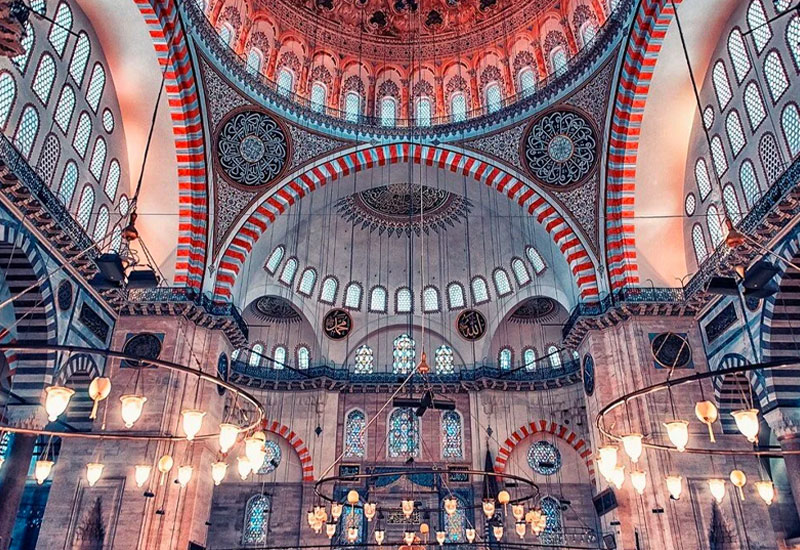
The Mihrab wall windows are made of stained glass by Drunk İbrahim. (In the Ottoman Empire, people are identified by their monikers since they don’t have last names).
Surely, Blue Mosque is popular for Turkish ceramic tiles, a traditional art form, but this does not mean that Süleymaniye Mosque also has remarkable and unique tiles. They are worth seeing.
Moreover, we know that Architect Sinan had a personal interest in and love for owls. The owl ornaments take place in most of his works, including this mosque. If you look up, at the circumferences of the dome, you will see an owl watching you from there.
Birds have long played a significant role in Turkish culture. Hence, Ottoman architects consistently incorporated small houses and water access points to cater to their needs.
Architect Sinan incorporated this tradition by placing small bird palaces throughout the külliye. A careful observer will surely find one.
10 – Acoustic Wonders: The Unbelievable Sound System
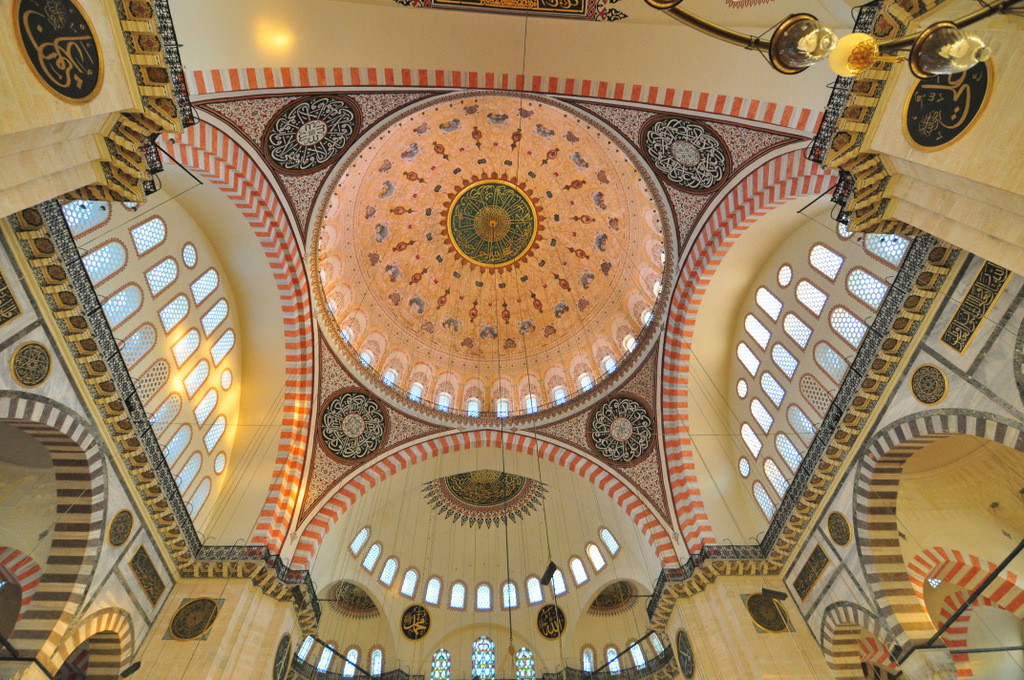
Obviously, it’s not a miracle, but a marvelous design of Architect Sinan! There is a well-known rumor about acoustic. One day, Sultan walks into the mosque and sees Sinan smoking hookah. He gets angry and asks Sinan what he was doing. Sinan says that he was examining the expansion of the bubbling sound around the hall. This is how the acoustic had been tested.
Why, though? Why Sinan was so obsessed with the acoustic? So basically, the acoustic was designed to enable sound to propagate equally inside the mosque. You can hear the muezzin, who recites the azan, at the same volume, and sound quality regardless of your standing point.
Frequently Asked Questions about Mosque Suleymaniye
Are Suleymaniye Mosque and Blue Mosque the same?
No, the Süleymaniye Mosque and the Blue Mosque (also known as the Sultan Ahmed Mosque) are not the same. Both are significant mosques located in Istanbul and are important architectural landmarks. The Süleymaniye Mosque is the largest mosque in the city and stands on the third hill, while the Blue Mosque is known for its impressive six minarets and beautiful blue tile interior.
Is Süleymaniye Mosque Shia or Sunni?
The Süleymaniye Mosque, like the majority of mosques in Turkey, is Sunni. It was constructed during the reign of Sultan Süleyman the Magnificent, a ruler of the Ottoman Empire which was predominantly Sunni.
Why does the Süleymaniye Mosque look like the Hagia Sophia?
Both Süleymaniye Mosque and Hagia Sophia share similar architectural elements, such as a large central dome flanked by smaller domes, due to the influence of Byzantine architecture on Ottoman designs. The architect of the Süleymaniye Mosque, Mimar Sinan, drew inspiration from the Hagia Sophia, striving to create a structure that echoed its grandeur but surpassed it in architectural perfection.
What is Süleymaniye Mosque also known as?
It doesn’t have an alternate name like the “Blue Mosque”, but it’s part of a larger complex or külliye, that includes a hospital, library, madrasa (school), and a bathhouse. Therefore, it’s often referred to as part of the Süleymaniye Külliyesi. The mosque itself is named after Sultan Süleyman the Magnificent, who commissioned it.
Suleymaniye Mosque Visiting Hours
As of the writing of this article, the hours are as follows:
Monday 8:30 am–4:45 pm
Tuesday 8:30 am–4:45 pm
Wednesday 8:30 am–4:45 pm
Thursday 8:30 am–4:45 pm
Friday 8:30 am–1:30 am
Saturday 8:30 am–4:45 pm
Sunday 8:30 am–4:45 pm
Tuesday 8:30 am–4:45 pm
Wednesday 8:30 am–4:45 pm
